
16 Oct, 2016
To Honour King Bhumibhol, Time is Ripe for a “Sufficiency Economy Tourism Year”
Bangkok – The Thai government’s official communications unit, the Public Relations Department, has uploaded an e-book containing a comprehensive history of the Sufficiency Economy, the insightful development philosophy espoused by the late monarch, His Majesty King Bhumibhol Adulyadej. Anyone reading through “Harmony with Nature: The Royal Wisdom of King Bhumihol,” will be overwhelmed by its foresight, practicality and simplicity. They will be even more surprised by an immediate question that will arise: Why, inspite of being guided by such enormous selflessness, wisdom, intelligence and benevolence, is Thailand in its current mess?
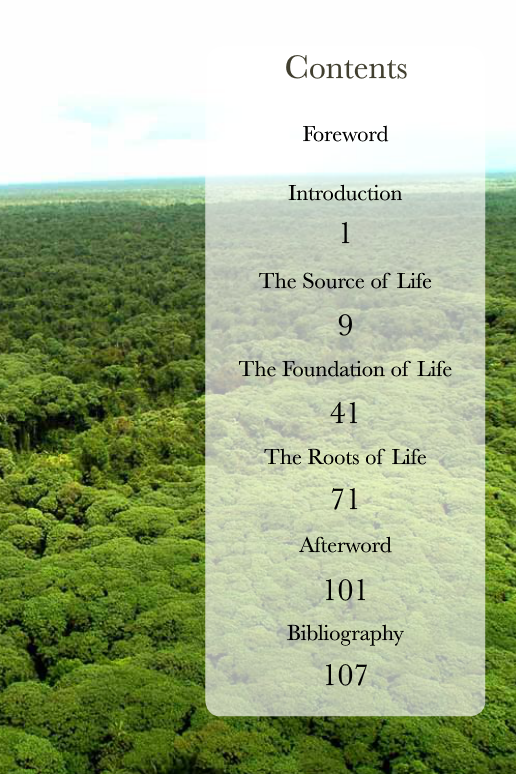 |
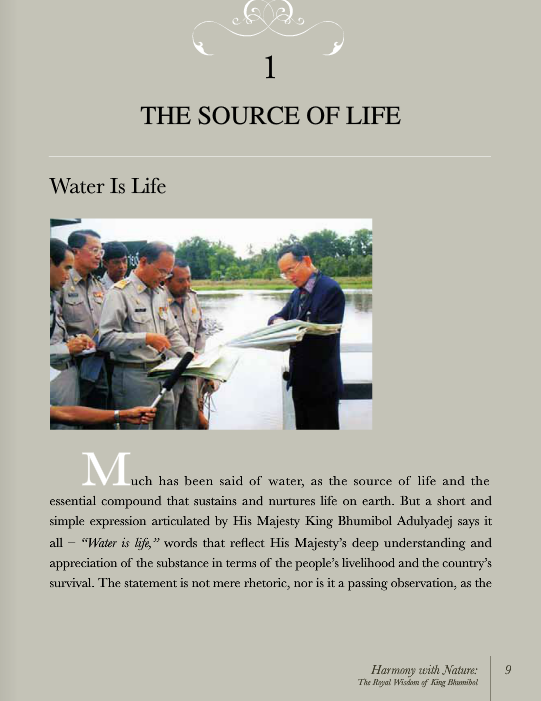 |
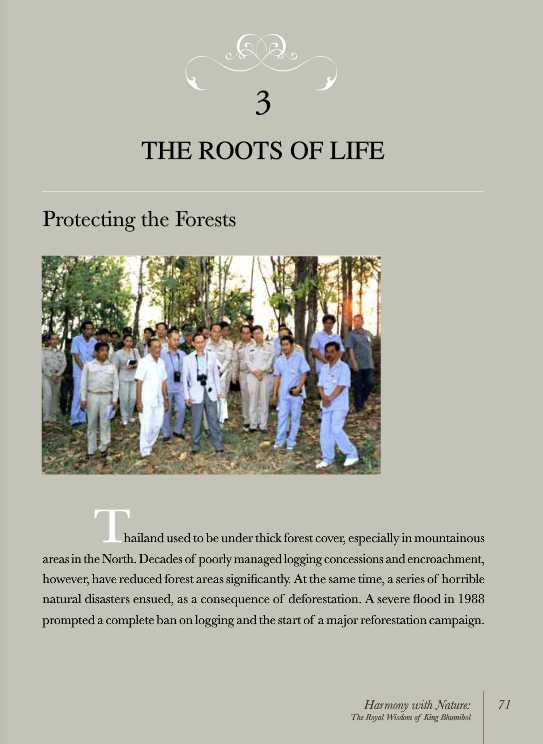 |
First published in 2011, when the kingdom marked the late King’s 7th cycle birthday on 5™ December 2011, the book is a compilation of the titanic work done by him over six decades of reign for “the benefits and happiness of the Siamese people,” as the King pledged upon his coronation on 5 May 1950. In clear, succinct language, it explains the what, why, where, when and how the King implemented his philosophy. Although the first Royally-initiated water resources management project was launched in 1963, the Sufficiency Economy entered the national development agenda only after the country’s economy was nearly bankrupted by a currency attack in 1997. It featured in both the Ninth (2002-2006) and Tenth (2007-2011) National Economic and Social Development Plans but it was the 11th Plan (2012 -2016), which adopted it as the “guiding light” for Thailand’s development. It was also designated a fundamental administration policy of the state; Section 83 of the Constitution (2007) says, “The State shall encourage and support implementation of the Sufficiency Economy Philosophy.”
An analysis of whether Thai economic and financial planners succeeded at a national level is beyond the scope of this dispatch. However, the tourism industry, which actually is perfect for a broad-based, holistic application of SE, has done nowhere near what it could have.
Well before the United Nations came up with its Millennium Development Goals and Sustainable Development Goals, the SE gave new meaning to the word “development”. As the illustrated excerpts below show, it blended the Buddhist precepts of a “moral fibre” in society and the Gandhian focus on curbing greed. It defined “infrastructure” not in terms of highways, railways and airports but as water and forests, respectively called the “source” and “root” of life. It talked of “moderation,” “frugality” and “balance.”
In 2007, the Thailand Human Development Report, issued by UN Development Program (UNDP) focussed on “Sufficiency Economy and Human Development.” It referred to SE as “an innovative approach to development, designed for practical application over a wide range of problems and situations, and owing to its practical nature, its robust simplicity, and its special relevance in the era of globalization, the approach deserves to be more widely known.” The Public Relations Department’s e-book, “Harmony with Nature” quotes the UNDP report as saying: “The Sufficiency Economy is an approach to life and conduct which is applicable to every level from the individual through the family and community to the management and development of the nation…. This approach offers a way to cope with the unavoidable realities of the market and globalization in the contemporary world.”
Reading through the book shows clearly how comprehensively the King understood the issues.
For a start, he knew well that development cannot be foisted onto local communities. He is quoted as saying in a Royal Address: “Development must take account of the local environment in terms of the physical environment, the sociological environment, and the cultural environment. By the local sociological environment, we mean certain characteristics, and ways of thinking, which we cannot force people to change. We can only suggest. We cannot go in to help people by trying to make them the same as us. However, if we go in and find out what people really want and then fully explain how they can best achieve their aims, the principles of development can be applied.”
The King also noted that project implementation and follow up means that local administrations and communities have to work together, thus: “Various departments and divisions that are related to people’s lives in all aspects can exchange views, reconcile their differences, and coordinate their work. Normally, each side has a center of its own, focusing on its work, not concerned with others. But the Royal Development Study Center is a place that brings together workforces and education. That means the people who need technical knowledge may come to observe, while officials who assist the people also come together in the same place. Benefit is gained both ways, by the people at the receiving end and by officials at the starting point.”
Neither did he believe that restoration and recovery of degraded forests required big budgets. Often, the best way to rehabilitate a destroyed habitat is by leaving it alone. Says the e-book, “His Majesty understands the way of nature and wants his subjects to be closer to nature. He has an insight into problems with nature, and has stated that, for solutions, nature must be used to cure nature. In one instance, such as in saving deteriorated forests, the Royal Initiative involves reforestation without planting trees by allowing nature to regenerate itself.”
He also understood that while open markets may have some value, a certain amount of protectionism may also be good. Hence, “The Sufficiency approach stresses that individuals need a certain measure of self-reliance to deal best with the market, and countries need a certain measure of self-reliance to deal with globalization. Sufficiency has the dual meaning of “not too little” and “not too much.” The principle of moderation or middle way is a guide for finding the right balance between internal resources and external pressures, between the needs of society at the grassroots, and the imperatives of the global economy.”
Why SE never got as much global recognition as the Grameen Bank or Bhutan’s Gross National Happiness is also worthy of closer scrutiny. Clearly, many of its concepts would not go down well amongst neoliberal economists, bankers and the champions of unimpeded globalisation such as the CEOs of the World Travel & Tourism Council, who are due to convene for their annual summit in Bangkok next year. SE was hard to define, measure and monitor by conventional methodologies. It was not designed to meet the conventional economic performance targets such as GDP or GNP. For politicians, it attracted neither votes nor budgets. Revolving door bureaucrats and executives meant that there was lack of continuity in implementation. In addition to opposing totally open markets, it potentially would have violated some aspects of international trade agreements.
The King himself seldom spoke in public about the SE philosophy. That was left to other members of the Royalty and senior executives of the various Royal foundations. The Bangkok-based UN Economic and Social Commission for Asia-Pacific, which holds dozens of conferences and events annually on alleviating poverty and promoting sustainability, did little to mainstream it. The SE never won a Nobel prize, like the founder of Grameen Bank Prof Muhammad Yunus.
Now that the King has passed away, SE has gained overnight respectability. Thailand is realising that many of his warnings are coming true in a world plagued by economic instability and environmental degradation. Although SE was founded mainly to help the hardships of farmers, it has enormous potential to benefit travel & tourism which is set to soon overtake agriculture as Thailand’s leading economic sector.
A global conference on “Sufficiency Economy Tourism” may be the way forward. The Royal Development projects are perfect for homestays or farm-stays. Their organically-grown fruits and vegetables can be popularised by the country’s hotels. Stressed out executives keen to get away from the rat race and enjoy a few days of simple living and agricultural work may find it useful to give it a shot. The Thai 2012-16 National Economic and Social Development Plan says that one of the most important trends taking place in the country is the onset of ageing populations. For many mentally and physically-fit elderly people seeking to live productive lives, setting up and managing royal development projects may be the way to go.
Much of this is already ongoing. A full-scale global conference on “Sufficiency Economy Tourism” would allow more ideas to emerge.
If the 1960 founding of the Tourism Authority of Thailand and Thai Airways International is seen as its date of birth, the Thai tourism industry is now 56 years old. That means it is only four years away from its own auspicious 5th cycle 60th anniversary. It, too, needs to focus on longevity and sustainability. During his lifetime, the King’s 60th birthday became the conduit for Visit Thailand Year, a marketing extravaganza that became a worldwide phenomena. If the travel & tourism industry truly wants to honour King Bhumibhol’s legacy, a “Sufficiency Economy Tourism Year” could potentially do for global tourism management what Visit Thailand Year did for tourism marketing.
Weblink to the e-book “Harmony with Nature: The Royal Wisdom of King Bhumihol,”: http://thailand.prd.go.th/ebook2/harmony/#/1/
Excerpts from the book:
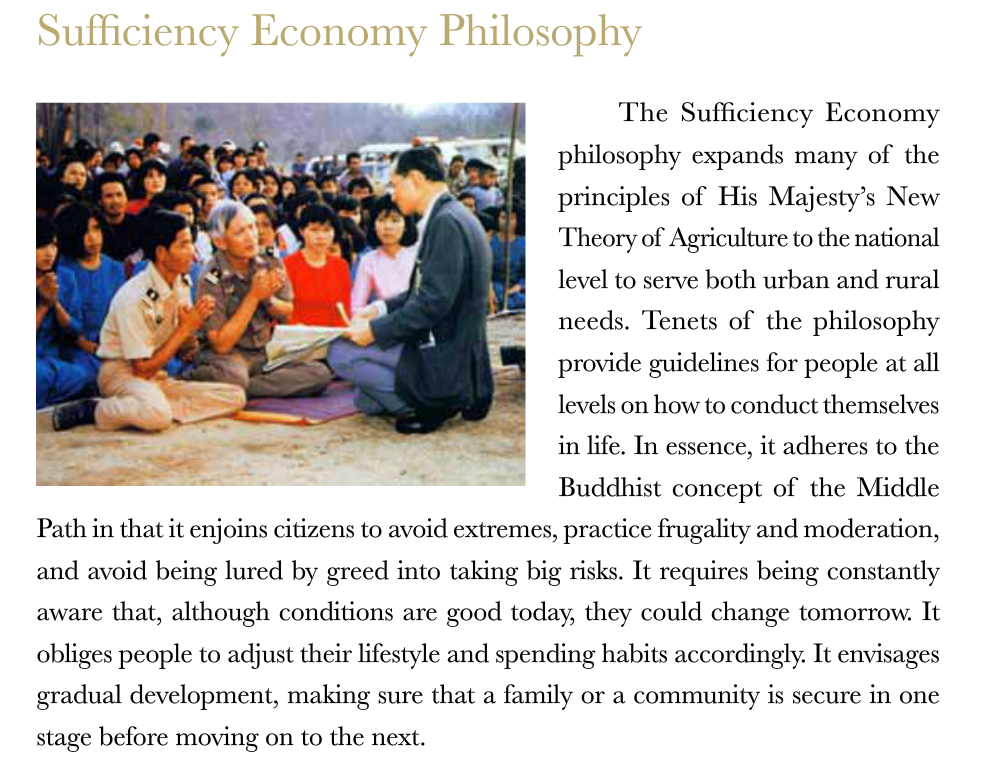 |
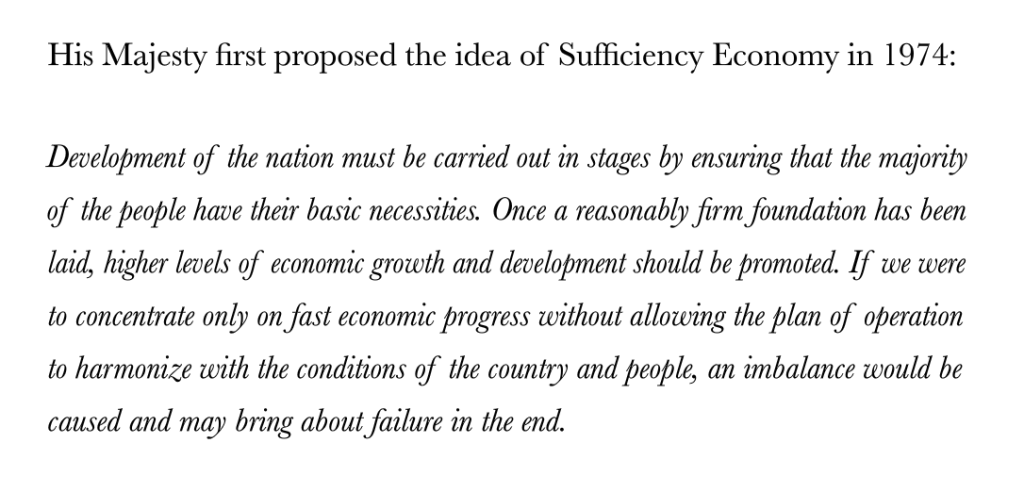 |
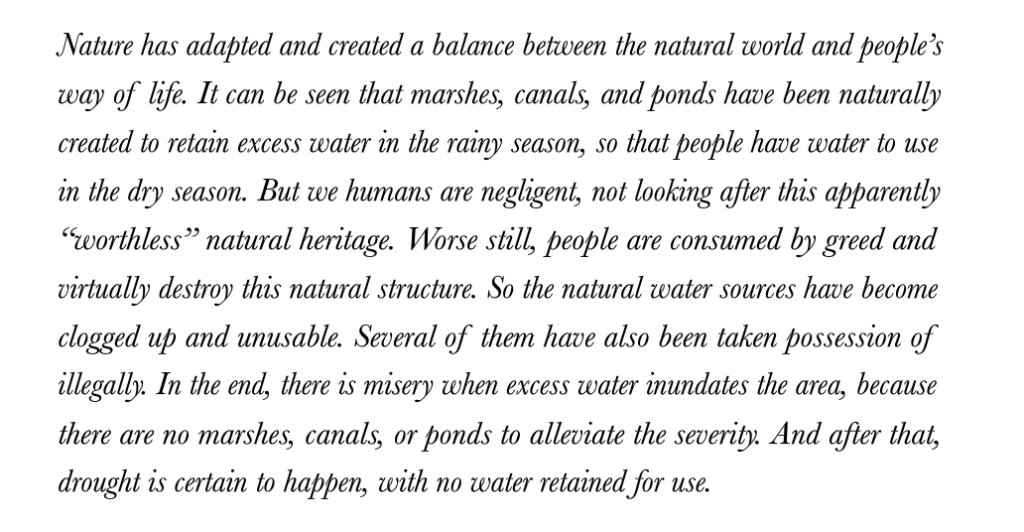 |
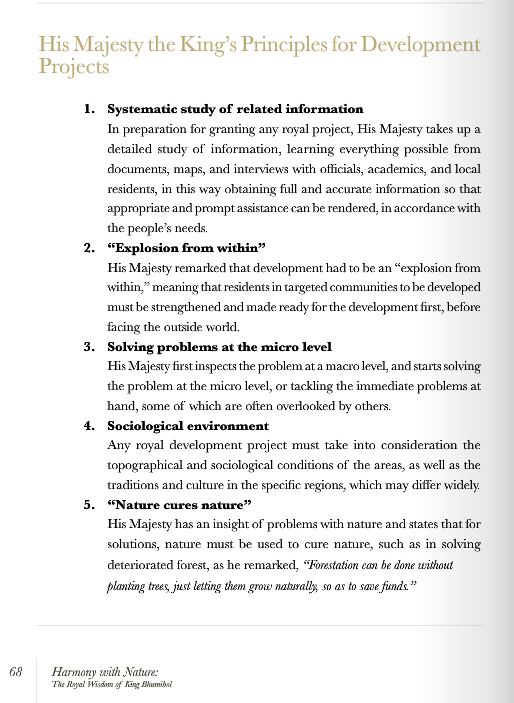 |
TAT weblinks to article on Royal Development Projects
The Tourism Authority of Thailand has referred me to some weblinks of the publicity it has given to the Royal Projects:
Make a real connection to Thailand through Royal Projects
http://www.tatnews.org/make-a-real-connection-to-thailand-through-royal-projects/
Discover the grassroots of Thainess at Chang Hua Man
http://www.tatnews.org/discover-the-grassroots-of-thainess-at-chang-hua-man/
Take a walk in the hills and discover the uniquely Thai Royal Project at Nong Hoi
Moreover, TAT invited 84 International Media during August before the Queen birthday to Fam Trips with four routes through the 4 regions, the highlight of each route are the Royal Development Projects of the Queen and also the King.
http://www.tatnews.org/the-84-perspectives-of-thailand-showcased-the-kingdoms-diversity/
http://www.tatnews.org/84-perspectives-of-thailand/

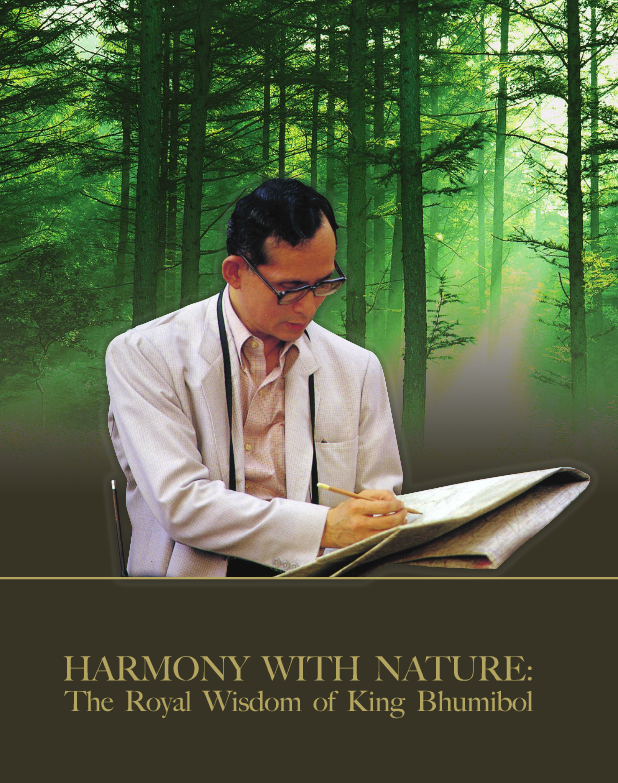


Liked this article? Share it!